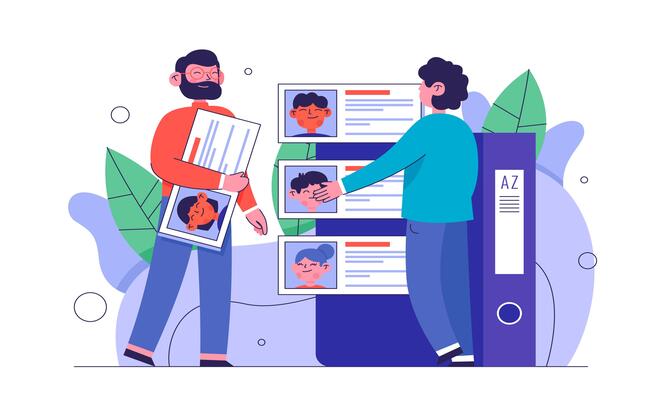Creating employee profiles in QuickBooks Desktop Payroll is a crucial step for effectively managing payroll and ensuring accurate records of employee information. QuickBooks Desktop Payroll offers a robust set of features to manage employee data, track work hours, and ensure compliance with tax and labor laws. This comprehensive guide will walk you through the steps to create and manage employee profiles in QuickBooks Desktop Payroll.
Introduction
QuickBooks Desktop Payroll is a powerful tool designed to help businesses manage their payroll processes efficiently. One of the key features of QuickBooks Desktop Payroll is the ability to create and maintain detailed employee profiles. These profiles store essential information about each employee, including personal details, employment data, payroll information, tax details, and benefits. By setting up accurate and comprehensive employee profiles, businesses can ensure smooth payroll processing and compliance with legal requirements.
Important Read:- How To Access QuickBooks Desktop Remotely?
Setting Up QuickBooks Desktop Payroll
Before you can create employee profiles, you need to ensure that QuickBooks Desktop Payroll is set up correctly. Here are the steps to get started:
- Install QuickBooks Desktop: If you haven’t already, install QuickBooks Desktop on your computer. You can purchase and download it from the official QuickBooks website.
- Set Up Payroll Service: Subscribe to a QuickBooks Desktop Payroll service plan that suits your business needs. You can choose from Basic, Enhanced, or Assisted Payroll services.
- Activate Payroll in QuickBooks: After subscribing, activate the payroll service in QuickBooks. Go to the ‘Employees’ menu and select ‘Payroll,’ then follow the prompts to activate your payroll service.
- Configure Payroll Preferences: Set up your payroll preferences by going to the ‘Edit’ menu, selecting ‘Preferences,’ and then choosing ‘Payroll & Employees.’ Configure settings such as payroll schedules, employee benefits, and tax details.
Navigating the Employee Center
The Employee Center in QuickBooks Desktop Payroll is your central hub for managing employee information. To access the Employee Center, follow these steps:
- Open QuickBooks Desktop: Launch QuickBooks Desktop on your computer.
- Navigate to Employee Center: Click on the ‘Employees’ menu at the top of the screen and select ‘Employee Center.’
In the Employee Center, you will see a list of existing employees, along with options to add, edit, and manage employee profiles.
Important Read:- How To Fix QuickBooks Won’t Open Company File Error?
Adding a New Employee Profile
To add a new employee profile in QuickBooks Desktop Payroll, follow these steps:
- Open Employee Center: As mentioned above, go to the ‘Employees’ menu and select ‘Employee Center.’
- Add New Employee: In the Employee Center, click on the ‘New Employee’ button located at the top left of the screen.
- Select Employment Type: Choose the type of employee you are adding (e.g., Regular, Contractor, or Officer).
- Enter Employee Information: You will be prompted to enter various details about the employee. These details are categorized into different sections for better organization.
Entering Employee Information
Personal Information
- Full Name: Enter the employee’s full legal name (first name, middle initial, and last name).
- Social Security Number (SSN): Enter the employee’s Social Security Number. This is essential for tax reporting purposes.
- Address: Enter the employee’s home address, including street, city, state, and ZIP code.
- Phone Number: Enter the employee’s contact phone number. Ensure this is up-to-date for communication purposes.
- Email Address: If applicable, enter the employee’s email address.
Employment Information
- Hire Date: Enter the date the employee was hired.
- Job Title: Enter the employee’s job title or position within the company.
- Employee ID: Assign a unique employee ID, if applicable. This can be useful for internal tracking.
- Department: Specify the department or division where the employee works.
- Employment Status: Indicate whether the employee is full-time, part-time, or temporary.
Payroll Information
- Pay Frequency: Select the pay frequency (e.g., weekly, bi-weekly, semi-monthly, monthly).
- Pay Rate: Enter the employee’s pay rate. This could be an hourly wage or a salary amount.
- Pay Method: Choose the method of payment (e.g., check, direct deposit).
- Overtime Rate: If applicable, enter the overtime rate for the employee.
- Additional Pay: If the employee receives additional compensation (e.g., bonuses, commissions), specify the details.
Tax Information
- Federal Filing Status: Select the employee’s federal filing status (e.g., single, married, head of household).
- Allowances: Enter the number of allowances the employee claims for federal tax withholding.
- Additional Withholding: If the employee requests additional federal withholding, enter the amount.
- State Tax Information: Enter the employee’s state tax information, including filing status and allowances.
- Local Tax Information: If applicable, enter local tax details based on the employee’s location.
Additional Information
- Emergency Contact: Enter the name and phone number of the employee’s emergency contact.
- Custom Fields: If your company uses custom fields for additional information, enter the relevant data.
Important Read:- How To Fix QuickBooks Desktop Login Issues?
Setting Up Employee Compensation
Hourly Wage
- Hourly Rate: If the employee is paid an hourly wage, enter the hourly rate in the ‘Pay Rate’ field.
- Overtime Rate: Specify the overtime rate, which is typically 1.5 times the regular hourly rate.
- Shift Differential: If the employee receives a shift differential, enter the details.
Salary
- Salary Amount: If the employee is salaried, enter the annual salary amount.
- Pay Period Salary: QuickBooks will automatically calculate the salary per pay period based on the pay frequency.
Commission
- Commission Structure: If the employee earns commissions, define the commission structure (e.g., percentage of sales).
- Commission Rate: Enter the commission rate or percentage.
Entering Employee Benefits and Deductions
Health Insurance
- Plan Type: Select the type of health insurance plan the employee is enrolled in (e.g., HMO, PPO).
- Employee Contribution: Enter the amount the employee contributes to the health insurance premium.
- Employer Contribution: Enter the amount the employer contributes to the health insurance premium.
Retirement Plans
- Plan Type: Choose the type of retirement plan (e.g., 401(k), IRA).
- Employee Contribution: Enter the percentage or amount the employee contributes to the retirement plan.
- Employer Contribution: Enter the percentage or amount the employer matches or contributes.
Other Deductions
- Garnishments: If the employee has any wage garnishments, enter the details.
- Union Dues: If applicable, enter the amount of union dues deducted from the employee’s paycheck.
- Other Deductions: Enter any other deductions, such as charitable contributions or loan repayments.
Reviewing and Saving the Employee Profile
After entering all the necessary information, it is crucial to review the employee profile for accuracy. Here are the steps:
- Review Details: Carefully review all the information entered, including personal details, employment information, payroll information, tax details, and benefits.
- Verify Accuracy: Ensure that all data is accurate and up-to-date. Double-check critical information such as Social Security Number, pay rate, and tax withholdings.
- Save Profile: Once you have verified the accuracy of the information, click the ‘OK’ or ‘Save’ button to save the employee profile.
Managing Employee Profiles
Editing Employee Information
- Open Employee Center: Go to the ‘Employees’ menu and select ‘Employee Center.’
- Select Employee: Click on the employee’s name whose information you want to edit.
- Edit Profile: Click the ‘Edit Employee’ button and make the necessary changes.
- Save Changes: After making the changes, click ‘OK’ or ‘Save’ to update the employee profile.
Terminating an Employee
- Open Employee Center: Go to the ‘Employees’ menu and select ‘Employee Center.’
- Select Employee: Click on the employee’s name who is being terminated.
- Edit Profile: Click the ‘Edit Employee’ button.
- Terminate Employment: Enter the termination date and reason for termination.
- Save Changes: Click ‘OK’ or ‘Save’ to update the employee’s status.
Rehiring an Employee
- Open Employee Center: Go to the ‘Employees’ menu and select ‘Employee Center.’
- Select Employee: Click on the terminated employee’s name.
- Edit Profile: Click the ‘Edit Employee’ button.
- Rehire Employee: Update the hire date and change the employment status to active.
- Save Changes: Click ‘OK’ or ‘Save’ to rehire the employee.
Conclusion
Creating and managing employee profiles in QuickBooks Desktop Payroll is essential for accurate payroll processing and effective employee management. By following the steps outlined in this guide, you can ensure that all necessary information is captured, maintained, and updated efficiently. Remember to review and verify the data regularly to keep your records accurate and compliant with legal requirements. If you encounter any difficulties or have specific questions, QuickBooks offers QB Desktop Support services that can be reached at +1-855-838-5970 for further assistance.
Frequently Asked Questions
You can provide your employees with access to their pay stubs through the following steps:
Enable QuickBooks Workforce:
1. Go to the ‘Employees’ menu and select ‘Manage Payroll Cloud Services.’
2. Sign in to your Intuit account.
3. Turn on the ‘QuickBooks Workforce’ service.
Invite Employees:
1. In the ‘Employees’ menu, select ‘Manage Payroll Cloud Services.’
2. Click ‘Invite Employees’ and enter their email addresses.
3. Your employees will receive an invitation to create an Intuit account and access their pay stubs online.
Print or Email Pay Stubs Manually:
1. Go to the ‘File’ menu, select ‘Print Forms,’ and then ‘Pay Stubs.’
2. Choose the paychecks you want to print or email and follow the prompts.
To add a new user to QuickBooks Payroll, follow these steps:
1. Launch QuickBooks Desktop on your computer.
2. Go to the ‘Company’ menu and select ‘Users’ and then ‘Set Up Users and Roles.’
3. Click the ‘New’ button to add a new user.
4. Enter the user’s name and assign a password.
5. Assign the appropriate roles and permissions to the new user.
6. Click ‘OK’ to save the new user.
7. Inform the new user of their login credentials and the roles assigned to them.
Follow these steps to set up a new employee in QuickBooks Desktop Payroll:
1. Go to the ‘Employees’ menu and select ‘Employee Center.’
2. Click the ‘New Employee’ button.
3. Input the employee’s personal details, such as name, address, and Social Security Number.
4. Fill in the hire date, job title, and employment status.
5. Enter the pay rate, pay frequency, and payment method.
6. Input federal, state, and local tax withholding information.
7. Add any health insurance, retirement plans, or other deductions.
8. Review and save the employee’s profile.
To update an employee’s information, follow these steps:
1. Go to the ‘Employees’ menu and select ‘Employee Center.’
2. Find and click on the employee’s name you want to update.
3. Click the ‘Edit Employee’ button.
4. Update the necessary information, such as address, pay rate, or tax details.
5. Click ‘OK’ or ‘Save’ to update the employee’s profile.
To add a new employee to a scheduled payroll, follow these steps:
1. Go to the ‘Employees’ menu and select ‘Employee Center.’
2. Click the ‘New Employee’ button and enter the employee’s details.
3. During the setup process, assign the employee to an existing payroll schedule.
4. If the employee is already created, go to their profile, click on ‘Payroll Info,’ and assign them to the appropriate payroll schedule.
5. Save the employee’s profile with the updated payroll schedule.
Follow these steps to back up your QuickBooks Desktop company file:
1. Launch QuickBooks Desktop on your computer.
2. Click on the ‘File’ menu, select ‘Back Up Company,’ and then choose ‘Create Local Backup.’
3. In the ‘Create Backup’ window, select ‘Local Backup’ and click ‘Options.’
4. Choose your backup location and set any other preferences (e.g., reminders, verification).
5. Click ‘Next,’ then ‘Save it now,’ and ‘Finish.’
6. Ensure that the backup file is created and stored in your chosen location.








